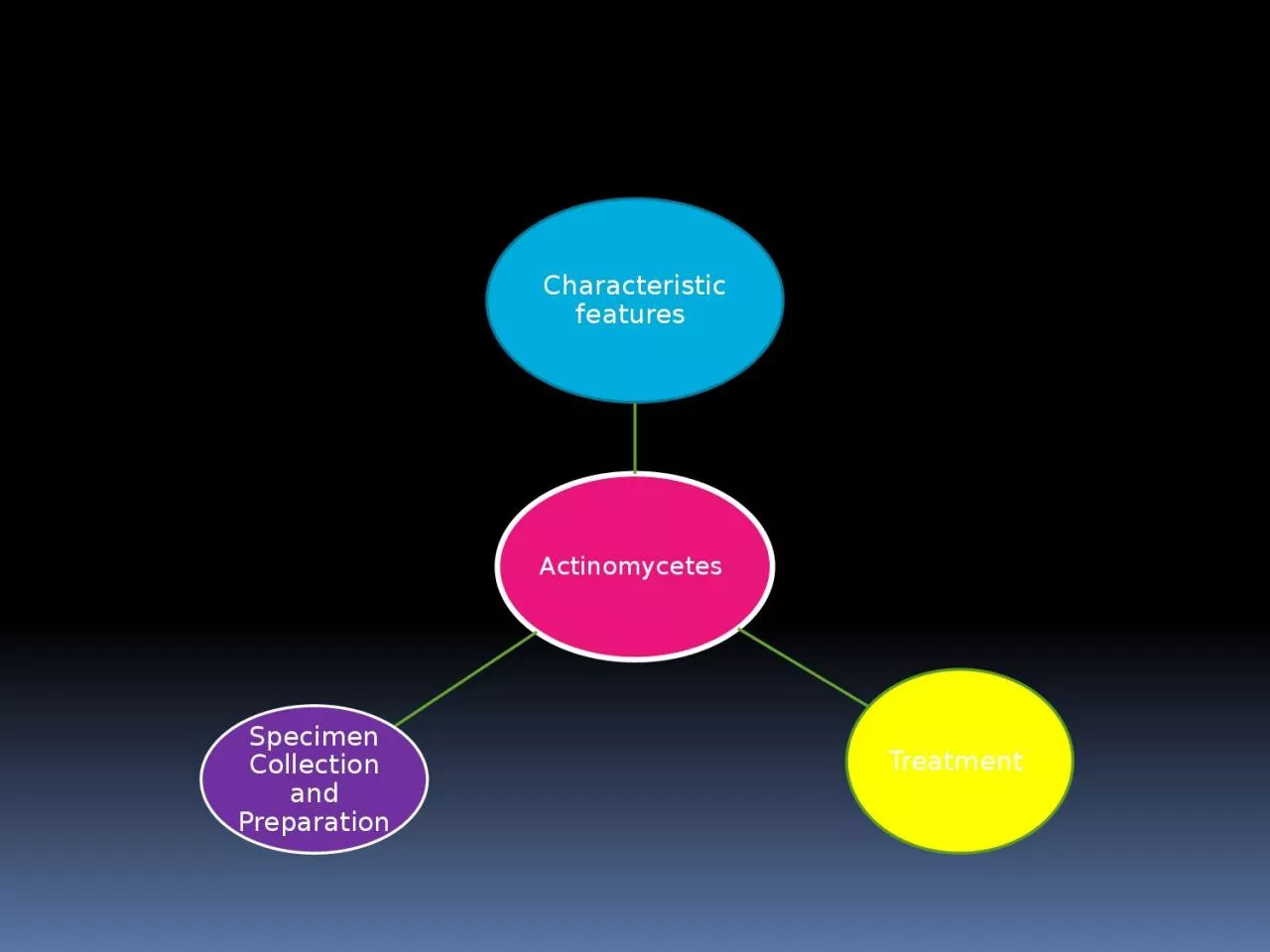

Bacterial Characteristics Fungal Characteristics Gram positive exogenous organisms Mycolic acid cell wall Lack nucleus and mitochondria Thin branching filaments hyphae ID: 1032853
Download Presentation The PPT/PDF document "Characteristic Features Resemble both ba..." is the property of its rightful owner. Permission is granted to download and print the materials on this web site for personal, non-commercial use only, and to display it on your personal computer provided you do not modify the materials and that you retain all copyright notices contained in the materials. By downloading content from our website, you accept the terms of this agreement.
1.
2. Characteristic FeaturesResemble both bacteria and fungi; Sensitive to aerobic antibacterial agents; Growth rate: 7-10 days Bacterial Characteristics Fungal CharacteristicsGram positive , exogenous organisms Mycolic acid cell wallLack nucleus and mitochondriaThin branching filaments (hyphae)Reproduce by spores or fragmentation
3. NOCARDIA spp.
4. NOCARDIA spp. Primary cause of Actinomycotic MycetomasMost common species: N. asteroides and N. brasiliensis Rough dry colonies Fragmenting bacilli Partially acid fast with Kinyoun stainUrea (+) and Lysozyme (+) Virulence factors: Superoxide dismutase and catalase NocobactinMusty odor
5. NOCARDIA spp.N. asteroides N.brasiliensisInfect through inhalationDisseminate through the tissue, brain and boneNo sulfur granules Key reactions: Casein-negative; tyrosine –negative; Xanthine-negative; Urea-positive; Lysozyme-positive; Gelatine-negativePulmonary infections (e.g. confluent bronchopneumonia ) Infect through skin and subcutaneous tissuesCommon in South America and Mexico Mycetoma lesions containing sulfur granulesKey reactions : Casein- positive; tyrosine-positive, xanthine- negative, Urea -positive Lysozyme positive ; Gelatine-positiveCutaneous infections caused by trauma
6. Streptomyces spp. Long thin hyphae with small oblong conidia Abundant branching, non-fragmenterNon-acid fast White dry to chalky coloniesOdor of freshly tilled soilCause mycetomas on the head and neckCommon species S. somaliensisKey reactions: Casein (+); Tyrosine (+); Xanthine (+); Urea (v); Lysozyme (-); Gelatin (+)(v) = variable
7. RhodococcusFound in soil and dung Facultative intracellular gram positive dipthroid coccobacilli Rare branching, partially acid fast Mucoid colonies -resemble Klebsiella Mainly a veterinary pathogen; but can be seen in immunosuppressed patients causing respiratory tract infections that can progress to granulomatous pneumoniaKey reactions: Urea (+); Catalase (+); Camp (+) using Staph.
8. Actinomadura Second leading cause of actinomycotic mycetomas Non-fragmenter, short chainsFound in the soil Non-acid fastForms mycetomas with draining sinusesChronically invasive, slowly progressive cutaneous infectionKey reactions: Casein (+); Tyrosine (+); Xanthine (-); Starch (+); Urea (-) Lysozyme (-); Gelatin (+); Cellobiose (+); Xylose (+)
9. Actinomyces israeliiNormal mouth floraCause of actinomycosis-Produce sulfur granules Characteristic growth of molar tooth or raspberry appearance Causes: Human cervicofacial , thoracic and abdominal actinomycosis; lacrimal canaliculitis , cervicitis and pelvic inflammatory disease associated with intrauterine contraceptive device
10. Specimen Collection Best samples are from:Puncture wounds, abrasions, drainage, sputum, bronchoalveolar lavage or biopsy (only when clinically necessary). Routine or special media include:Nocardia Differentiation media – used to distinguish Nocardia from Streptomyces spp.Cadmium sulfate fluoride acriflavine telluride (CFAT agar)
11. TreatmentDrainage, surgery, antimicrobials (e.g. Sulfonamide Erythromycin ,Azithromycin , Clarithromycin ,Ciprofloxacin Vancomycin Aminoglycosides, Rifampin Imipenem)Antifungal and Beta lactam (ie. penicillin etc.) resistant